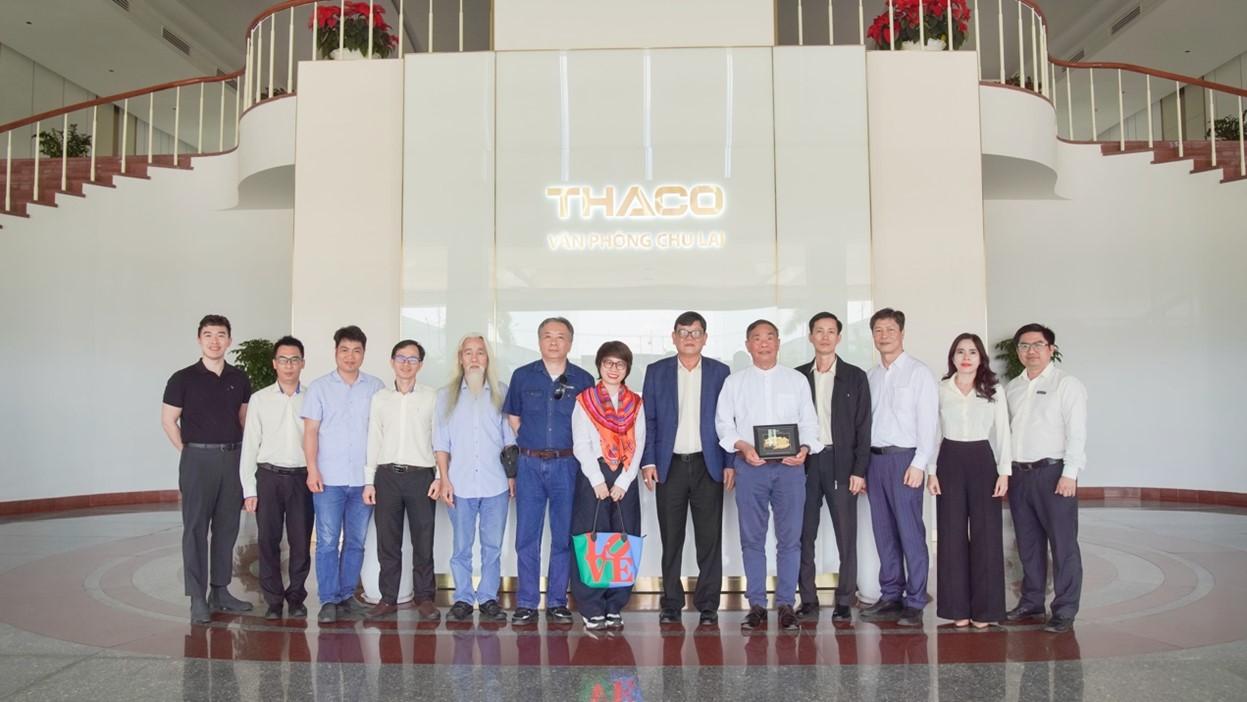Cancer therapy using negative regulation inhibition method awarded 2018 Nobel Prize in Medicine
Posted date 03/10/2018
8.377 view

Whenever there is a change in the body, the immune system will adjust itself to help the body fight that change. This response is called immunoregulation.
Associate Professor, Dr. Nguyen Thuong Dong
Whenever there is a change in the body, the immune system will adjust itself to help the body fight that change. This response is called immunoregulation .
Feedback regulation is a regulation in which every time there is a change in the activity of a certain function in the body, that change will lead to a reverse effect, to create a series of continuous reactions, helping to adjust the activity of that function back to normal.
Most of the body's controls operate in a negative feedback mode, meaning that they increase the activity of an organ when its activity is decreasing and vice versa, they decrease it if its activity is increasing. For example, when blood pressure is increasing, there will be a series of reactions such as slowing the heart rate, reducing myocardial contractility... to adjust blood pressure back to normal. Conversely, when blood loss causes blood pressure to decrease, a series of reactions such as vasoconstriction, rapid heartbeat... appear to increase blood pressure again. The negative feedback immune regulation mechanism is the foundation and scientific basis of the immunotherapy cancer treatment method (Immuno checkpoint inhibitor).
In 1990, Tasuku Honjo (Kyoto University) found a gene that specializes in programmed cell death (including cancer cells). This gene is also a normal gene and is necessary for the body to eliminate unnecessary cells. He named it PD-1 (Programmed cell death 1).
In 2000, Tasuku Honjo tested this gene on mice. He tried to inactivate PD-1, and the mice developed lupus rash, a disease caused by an excessive immune response. From this, he deduced that PD-1 is a negative immune regulatory gene.
Later, Ariene Sharpe and Gordon Freeman (Harvard University) discovered that PD-1 works because it is activated by the ligands PD-L1 and PD-L2 in the cancer cell membrane, which is why cancer cells can paralyze the immune system.
Thus, Tasuku's PD-1 is a protein in immune cells that acts as an inhibitor. He tested it on small cell lung cancer: Two months after introducing it into immune cells, pseudo-progression began to appear. After 4 months, he noticed that the tumor size had shrunk... Since then, Tasuku has become famous for his research on the PD-1 protein in cancer therapy. He is also the discoverer of the AID enzyme, which plays an important role in antibody gene recombination and hypermutation. He is 76 years old this year.
James P. Allison (University of Texas) also discovered a protein that acts as an inhibitor of the immune system. He laid the theoretical basis for science, if immune cells are released, they are capable of attacking tumors. He was the first scientist to study the development mechanism and activation mechanism of T lymphocyte receptors and he isolated the complex protein chain of T lymphocyte receptor antigen, making an important contribution to cancer therapy by inhibiting negative immune regulation. Allison is 70 years old this year. For their contributions, they were awarded the 2018 Nobel Prize in Medicine.
Feedback regulation is a regulation in which every time there is a change in the activity of a certain function in the body, that change will lead to a reverse effect, to create a series of continuous reactions, helping to adjust the activity of that function back to normal.
Most of the body's controls operate in a negative feedback mode, meaning that they increase the activity of an organ when its activity is decreasing and vice versa, they decrease it if its activity is increasing. For example, when blood pressure is increasing, there will be a series of reactions such as slowing the heart rate, reducing myocardial contractility... to adjust blood pressure back to normal. Conversely, when blood loss causes blood pressure to decrease, a series of reactions such as vasoconstriction, rapid heartbeat... appear to increase blood pressure again. The negative feedback immune regulation mechanism is the foundation and scientific basis of the immunotherapy cancer treatment method (Immuno checkpoint inhibitor).
In 1990, Tasuku Honjo (Kyoto University) found a gene that specializes in programmed cell death (including cancer cells). This gene is also a normal gene and is necessary for the body to eliminate unnecessary cells. He named it PD-1 (Programmed cell death 1).
In 2000, Tasuku Honjo tested this gene on mice. He tried to inactivate PD-1, and the mice developed lupus rash, a disease caused by an excessive immune response. From this, he deduced that PD-1 is a negative immune regulatory gene.
Later, Ariene Sharpe and Gordon Freeman (Harvard University) discovered that PD-1 works because it is activated by the ligands PD-L1 and PD-L2 in the cancer cell membrane, which is why cancer cells can paralyze the immune system.
Thus, Tasuku's PD-1 is a protein in immune cells that acts as an inhibitor. He tested it on small cell lung cancer: Two months after introducing it into immune cells, pseudo-progression began to appear. After 4 months, he noticed that the tumor size had shrunk... Since then, Tasuku has become famous for his research on the PD-1 protein in cancer therapy. He is also the discoverer of the AID enzyme, which plays an important role in antibody gene recombination and hypermutation. He is 76 years old this year.
James P. Allison (University of Texas) also discovered a protein that acts as an inhibitor of the immune system. He laid the theoretical basis for science, if immune cells are released, they are capable of attacking tumors. He was the first scientist to study the development mechanism and activation mechanism of T lymphocyte receptors and he isolated the complex protein chain of T lymphocyte receptor antigen, making an important contribution to cancer therapy by inhibiting negative immune regulation. Allison is 70 years old this year. For their contributions, they were awarded the 2018 Nobel Prize in Medicine.
Latest article
View all Posts
Related articles
See all related Articles
Register for admission consultation 2025
Dai Nam University offers admissions to
36 academic programs
across a diverse range of disciplines, including Healthcare, Engineering and Technology, Economics and Business, and Social Sciences and Humanities.
Register now to secure
scholarships and tuition support worth up to 55 billion VND
scholarships and tuition support worth up to 55 billion VND

Register now to secure
scholarships and tuition support worth up to 55 billion VND
scholarships and tuition support worth up to 55 billion VND









